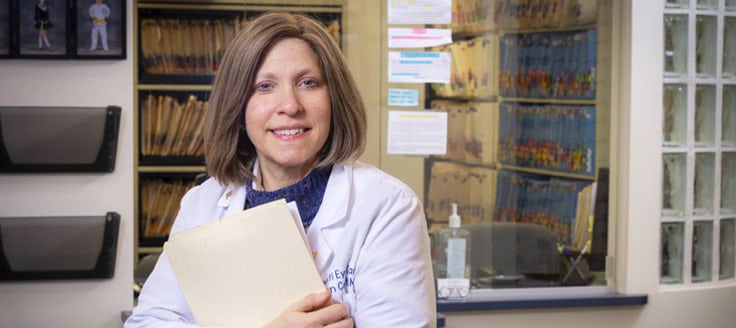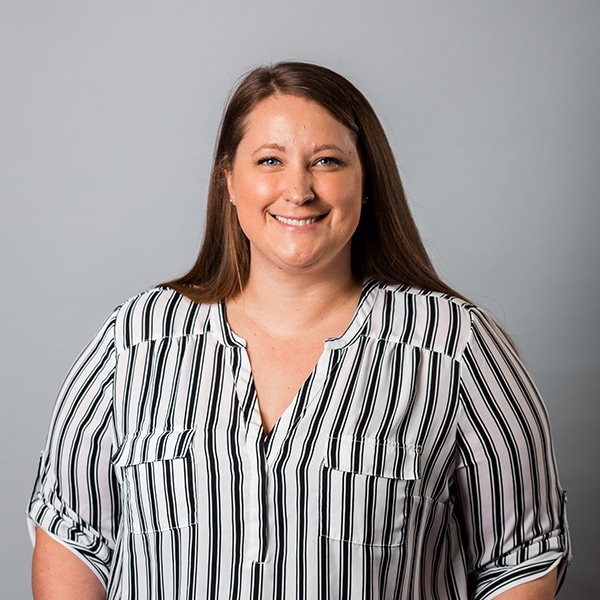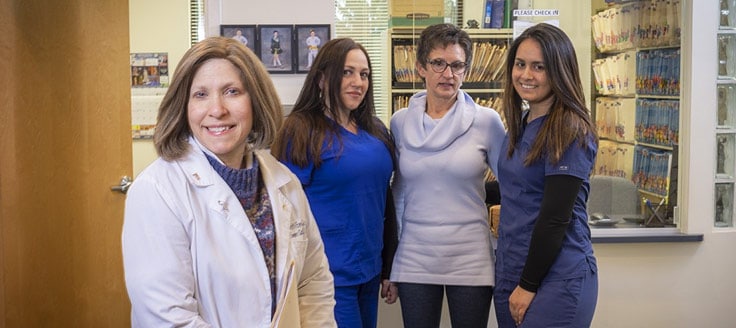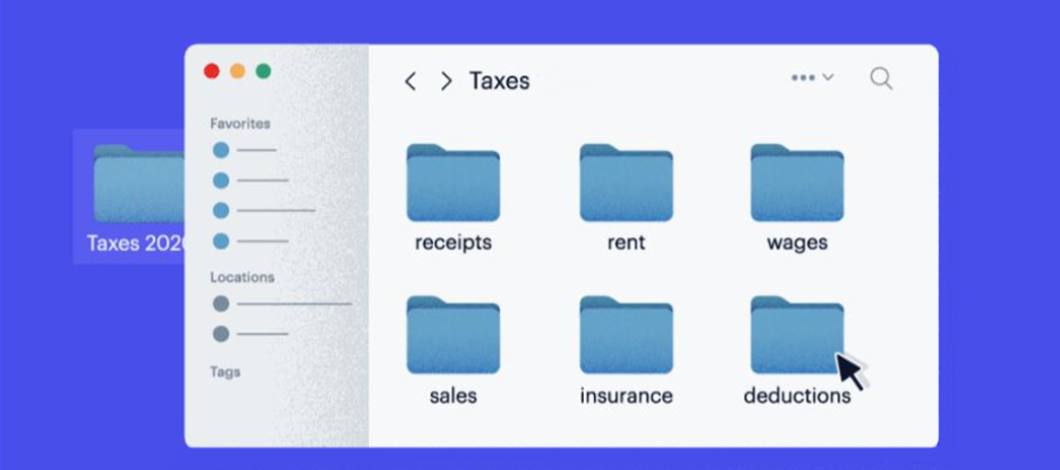While all businesses face challenges collecting payment for the services they deliver, medical practices have to be particularly diligent in managing receivables. Rising insurance deductibles have moved more of the cost of healthcare away from insurers and onto patients. This can become problematic if a patient can’t pay the full bill—or any part of it—on their own. As Dr. Eileen Conti, President and Ophthalmologist of Conti Eye Care, discovered, reimbursement delays can quickly lead to a cash flow crisis. She needed a way to sustain positive working capital and maintain a healthy bottom line in spite of this problem.
For nearly two decades, Dr. Conti has been delivering comprehensive ophthalmology services to the residents of Bedminster, New Jersey. In her own words, the mission of her practice is to provide “the best possible medical care in a friendly environment.”
“We take special care of our patients,” explains Dr. Conti. “We aim to make each patient feel appreciated and cared for.” This commitment is evident in the assessments of her customers. As one patient put it, Dr. Conti “will spend all the time you need to answer all of your questions, and will never rush you out of the office.”
But like many small medical practices, Conti Eye Care periodically experiences cash flow shortages. The cause? The landscape of medical billing is changing. As insurance costs shift away from payers and toward patients in the form of higher copays and deductibles, the risk of cash flow problems arise. Bottom line: consumers aren’t as reliable as insurers when it comes to payments, leading to longer and costlier collection cycles.
“There are months when patients haven’t met their deductibles,” explains Dr. Conti. “You’re not getting paid, but you still want to provide a high standard of care. It’s a challenge to do that if you’re forced to cut back on hours because you’re not being reimbursed.”
To see her practice through periods of low reimbursement, Dr. Conti sought out short-term financing. With a reserve of cash to draw from, Dr. Conti had enough working capital to pay immediate operational expenses and invest in the future of her company.
Cash Flow Challenges Mounting for Medical Practices
A core tenet of sufficient cash flow management is to collect balances faster than you pay your bills. But in the world of medical services, this can prove challenging. According to a McKinsey & Company study, consumers pay twice as slowly as commercial payers, and rank medical bills seventh in importance, behind cell phones and Internet providers. This means when it comes time to pay the bills at month end, medical providers are often among the last to be paid—assuming there’s money left to pay them.
The very nature of medical billing magnifies this problem. After a medical service is delivered, a claim is submitted to the patient’s insurer. While an insurer might pay in 14 to 30 days, when a bill is the patient’s responsibility, it might take the insurer several weeks to notify the practice. Then, the patient has another 30 days to pay—assuming they pay on time.
The sum result is a collection cycle that can be long and costly. And it is a growing problem as the proportion of patient financial responsibility increases with the rise in high-deductible health plans. Patient healthcare costs—including both deductibles and out-of-pocket maximums—have increased by almost 30% percent since 2015.
In this environment, profit risks are high for small offices, forcing some out of independent practice. In fact, only 31 percent of physicians identify as independent practice owners or partners in 2018, down from 33 percent in 2016, and down from 48.5 percent in 2012.
Dr. Conti finds her practice especially vulnerable to the effects of these trends in the first few months of the year, when deductibles reset, shifting the entire payment burden onto the patient.
“Cash flow is really tight at times,” Dr. Conti explains. “And if you can’t pay rent, then you get charged fees, and it can become very difficult, very quickly.”
During those times, when reimbursement was low, Dr. Conti secured short-term financing to sustain operations until insurer and patient reimbursements flowed into the practice.
Get Your Business Loan Faster
Boosting Low Cash Reserves with Short-term Financing
In her search for financing, Dr. Conti encountered some roadblocks. Qualifying for traditional loan options is notoriously hard for small businesses. Today, 1 in 5 small business owners are denied for bank loans. While there are some signs that banks have been opening their credit up again, traditional lending still has a far way to go. “I often heard, ‘No, you’re too small; we’re not going to help you out,’” recounts Dr. Conti.
The second challenge she faced was speed. Research from the Federal Reserve Bank of New York shows the average small business owner spent 26 hours searching and applying for financing. For the select few who are approved, it can take an additional 30 to 90 days to receive the funds. As Dr. Conti had immediate operational expenses to address, she needed access to capital in days, not weeks or months.
Due to these obstacles, Dr. Conti turned to the alternative lending marketplace. Online lenders provide a path for business owners with proven track records to secure different business loan options with much less work and fewer qualifications. Through a lending marketplace, the application process is fast-tracked with a single application that matches business owners to financing products from a variety of lenders. And because alternative lenders are subject to different regulations than banks, approval and funding times are also faster.

Building a Lifeline of Business Credit
Dr. Conti found allies in the alternative lending space in Fast Capital 360 and Business Advisor Mark Lauer. “Mark took most of the trouble out of my hands,” says Dr. Conti. “I explained our situation and need, and he delivered a good answer very quickly—it was terrific.”
That initial answer was a business line of credit the practice could draw from as needed. As Dr. Conti put it, this financing solution was “very helpful and unexpected.”
“As we paid it off, we had more funding available.”
Since this initial line of credit in March of 2016, Dr. Conti has worked with Mark to secure funding 10 times. And with each instance, Mark works to identify better financing positions. “I always assess her current need and situation, and then find the very best program tailored to that need,” he explains.
With those funds, Dr. Conti successfully weathered the new billing paradigm with enough of a cash reserve to sustain operations when reimbursements were low.
-
4 Loans to Consider for Medical Practices
In this case study, Dr. Conti leveraged a business line of credit to address her practice’s cash flow problems. A business line of credit gives business owners access to funds to spend as needed. Owners are never obligated to withdraw the entire credit line, only what their business needs, which means they pay interest solely on the funds used. But there are many financing options out there. The best fit will depend on specific requirements. Here’s a quick list of five popular short-term financing options for medical practices:
- SBA loans are among the best small business loans available. These financing products are funded through intermediary lenders and are guaranteed up to 85% by the US Small Business Administration. For this reason, they come with competitive rates and terms. But be forewarned, the application process is lengthy and paperwork-intensive, so they are not the best options for medical practices in need of fast funding.
- Term loans are similar to traditional business loan. A lender loans you a lump sum. You repay it over time, including interest, for a set term.
- Short-term loans are more expensive with higher interest rates and shorter repayment terms. But for healthcare providers who need fast financing, they might be worth the cost.
- Equipment loans are excellent for large equipment purchases as the equipment itself serves as collateral. This lowers the risk for the lender, which means that a personal guarantee is rarely required.
The Financial Wiggle Room to Fulfill the Practice Mission
When business was good, Dr. Conti looked to advance the standard of care with investments in state-of-the-art diagnostic equipment.
To date, Dr. Conti has financed the purchase of a fundus camera (a device used to visualize the optic nerve in the back of the eye) and an automated keratometer (a diagnostic instrument for measuring the curvature of the anterior surface of the cornea).
By Outfitting Conti Eye Care with the latest diagnostic tools, she demonstrates that her practice is committed to delivering the best and most comprehensive ophthalmology experience possible.
Through these diagnostic tools, patients “learn about themselves, about their eyes and how they can improve their vision with our practice, versus elsewhere,” says Dr. Conti. And it’s this mission that will continue to inspire the practice’s next move.
In the coming months, Dr. Conti and her partner will decide whether or not to merge their practice with a fellow provider. “We’re at a point where we’re not quite sure if we’re going to join another group or not. If we don’t, we’ll continue to work with Fast Capital 360 to buy more equipment and advance the practice,” she explains. In either scenario, the aim will be to deliver the highest-standard of ophthalmological care.











